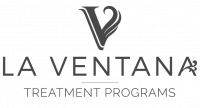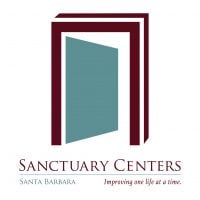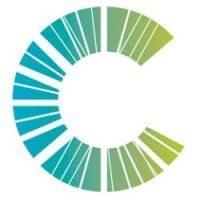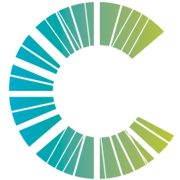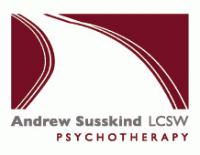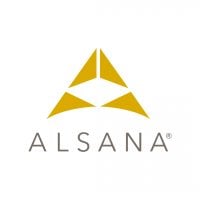Council on Alcoholism and Drug Abuse
Drug Rehab Center in Santa Barbara, California
The Council on Alcoholism and Drug Abuse in Santa Barbara, California is an accredited, comprehensive addiction treatment facility that offers personalized care and treatment plans tailored to the individual's needs, ranging from inpatient detoxification to outpatient support and aftercare services, along with individual therapy to obtain coping skills and relapse prevention strategies as well as group therapy for social connection.
About This California Facility
Council on Alcoholism and Drug Abuse (CADA) is a nonprofit substance abuse treatment program located in Santa Barbara, California. CADA offers inpatient treatment, outpatient programs, and co-occurring disorder treatment to clients of all ages and backgrounds, providing specialized services such as in-school programs, court-ordered treatment, and perinatal care. The residential program can accommodate up to 12 clients at a time.
• Intensive residential treatment program lasting up to 90 days, offering 24-hour care and support
• Outpatient treatment allowing clients to live at home while receiving regular therapy and support services
• Specialized treatment for co-occurring disorders, addressing mental health issues alongside addiction
CADA is accredited by the State License and SAMHSA, ensuring high-quality care for its clients. The facility accepts many major insurance plans, including Aetna, Anthem, Beacon, Amerigroup, and Bright Health, although clients should confirm their coverage before enrolling in a program.
CADA treats a wide range of addictions, including drug addiction, alcoholism, and opioid addiction. Treatment methods encompass individual and group therapy, cognitive behavioral therapy, 12 Step meetings, family sessions, life skills development, and relapse prevention.
Genders
Ages
Modality
Additional
Accreditations
State License
SAMHSA
Conditions and Issues Treated
Recovering from any type of substance abuse is a long process, but it is one of the most worthwhile and life changing events any addicted person will ever go through. This is a combination of detoxing the body, rehabilitation, and recovery. There is also therapy, aftercare, and support during the entire process.
While substance abuse can take over a person’s life, it is something that can also be overcame by professionals at Council on Alcoholism and Drug Abuse in Santa Barbara, CA
With so many people struggling with opioid addiction, opioid addiction treatment is more critical than ever before. Patients often take opioids when they face a painful injury. When someone begins taking opioids such as Vicodin or oxycodone differently than how the medications were prescribed, this points to opioid addiction.
Stopping these types of medications abruptly is not safe. That is where opioid addiction treatment at Council on Alcoholism and Drug Abuse in Santa Barbara, CA comes in. Most opioid addiction treatment facilities start with detox and move to rehabilitation services while providing medical support during the process.
Getting over an opioid addiction takes time and determination, but with the right support and resources, those struggling with opioid addiction can recover and move forward with their lives.
Levels of Care Offered at Council on Alcoholism and Drug Abuse
This center offers a variety of custom treatment tailored to individual recovery. Currently available are Aftercare Support, Detox, Inpatient, Outpatient, with additional therapies available as listed below.
Detox is a drug rehab process that begins before the actual drug rehab treatment. It is used to remove any residual toxins left in your body (and brain) after using drugs, and it is used with the intent to help you or your loved one complete drug rehab.
If you are addicted to opiates like heroin, methadone, or prescription painkillers, you will detox with medication. This is because the withdrawal symptoms are often more intense and uncomfortable for an opiate addict than for someone who has abused or is dependent on other drugs, like cocaine.
Inpatient rehab programs like what’s offered at Council on Alcoholism and Drug Abuse in Santa Barbara, CA are ideal for covering all the bases that surround one’s addiction. It’s considered the most comprehensive approach to care for people afflicted with addiction. Patients live in a facility where they have access to therapy and medical care 24/7.
Outpatient treatment is treatment that occurs when a patient is not checked into a rehab facility. The patient may show up for therapy sessions, go through detox and engage in other therapies to help them recover. However, they will do so while they live at home in California.
Outpatient therapy provided by Council on Alcoholism and Drug Abuse is usually recommended as a follow up to inpatient therapy. It helps patients adapt to their normal lives after treatment. In some cases, it can also be an alternative to inpatient treatment. People may choose this route if they are unable to leave their jobs, children or if they don’t have the money for inpatient treatment. However, inpatient treatment is the best way to recover from addiction.
Therapies & Programs
Individual professional counseling or individual therapy refers to the one-on-one interaction between a patient and his or her counselor. Individual therapy allows for more privacy, one that group interactions can’t provide. Therefore, it becomes easier for a person to unload and become more open to his or her counselor.
Another benefit of individual therapy at Council on Alcoholism and Drug Abuse in Santa Barbara, CA is that all sessions aim to speed up a single person’s progress. It makes it easier for the counselor and the patient to deal with the central issues, which are likely the culprits of substance addiction.
Once the roots of the problems are addressed, it becomes less challenging for a recovering patient to maintain sobriety and brush off temptations.
Families are not always as supportive as they could be, but by opting for family therapy, many recovering addicts are able to understand their addiction and get the support they need to get sober. These therapy sessions at Council on Alcoholism and Drug Abuse in Santa Barbara, CA involve all members of the family who play a role in the recovering person’s daily life. They work together to overcome past issues, avoid triggers, and remain strong and supportive of each other.
In group therapy, the patient undergoes sessions with other patients dealing with similar problems under the guidance of a trained counselor. The members of the group interact with each other and talk freely about their issues. The recovery of members of the group from the problems that they face gives the patients confidence that they can also overcome their addiction.
Group therapy at Council on Alcoholism and Drug Abuse reduces the feeling of loneliness and improves the coping skills of the patients. Group therapy provides patients with continuous feedback from other members. The group dynamics ensure that members start having some structure and routine in their lives.
Cognitive behavioral therapy (CBT) is a way of addressing concerns through talking. Talking through issues can identify sources of discomfort or unhealthy thoughts. CBT is a healthy way Council on Alcoholism and Drug Abuse addresses some behaviors which may be bringing unintended consequences in a persons life.
The 12 step program is the treatment method used by Alcoholics Anonymous, but it can apply to any type of addiction. It outlines the 12 steps addicts should take on the path to recovery. Steps include admitting you have a problem and making the decision to turn your life around. A belief in a higher power and making amends to others are also part of the program.
Payment Options Accepted
For specific insurance or payment methods please contact us.
Is your insurance accepted?
Ask an expert, call (888) 674-0062
Additional Details
Specifics, location, and helpful extra information.
Santa Barbara, California 93101 Phone Number(805) 963-1433 Meta DetailsUpdated April 15, 2024
Staff Verified
Patient Reviews
There are no reviews yet. Be the first one to write one.
Santa Barbara, California Addiction Information
More than 3 million of California's citizens are addicted to illegal drugs. Almost 800,000 people use hard drugs, almost 5 million use marijuana, and another 2.1 million abuse alcohol every year. Other substance abuse issues such as binge drinking and teen drug use are also common. Many illegal drugs such as cocaine, heroin, methamphetamine, and marijuana are smuggled into the state from Mexico.
Methamphetamine is the most commonly abused drug in Santa Barbara County, followed by heroin and prescription drugs. Santa Barbara has the highest rate of drug overdose deaths in California. Over 18% of the population reported alcohol abuse in the past year. The proximity of Santa Barbara to Mexico and the availability of drugs in the city contribute to the problem.
Treatment in Nearby Cities
- Temecula, CA (159.7 mi.)
- Fountain Valley, CA (111.4 mi.)
- Colton, CA (138.4 mi.)
- Oakhurst, CA (200.9 mi.)
- Topanga, CA (66.7 mi.)
Centers near Council on Alcoholism and Drug Abuse
The facility name, logo and brand are the property and registered trademarks of Council on Alcoholism and Drug Abuse, and are being used for identification and informational purposes only. Use of these names, logos and brands shall not imply endorsement. RehabNow.org is not affiliated with or sponsored by Council on Alcoholism and Drug Abuse.



